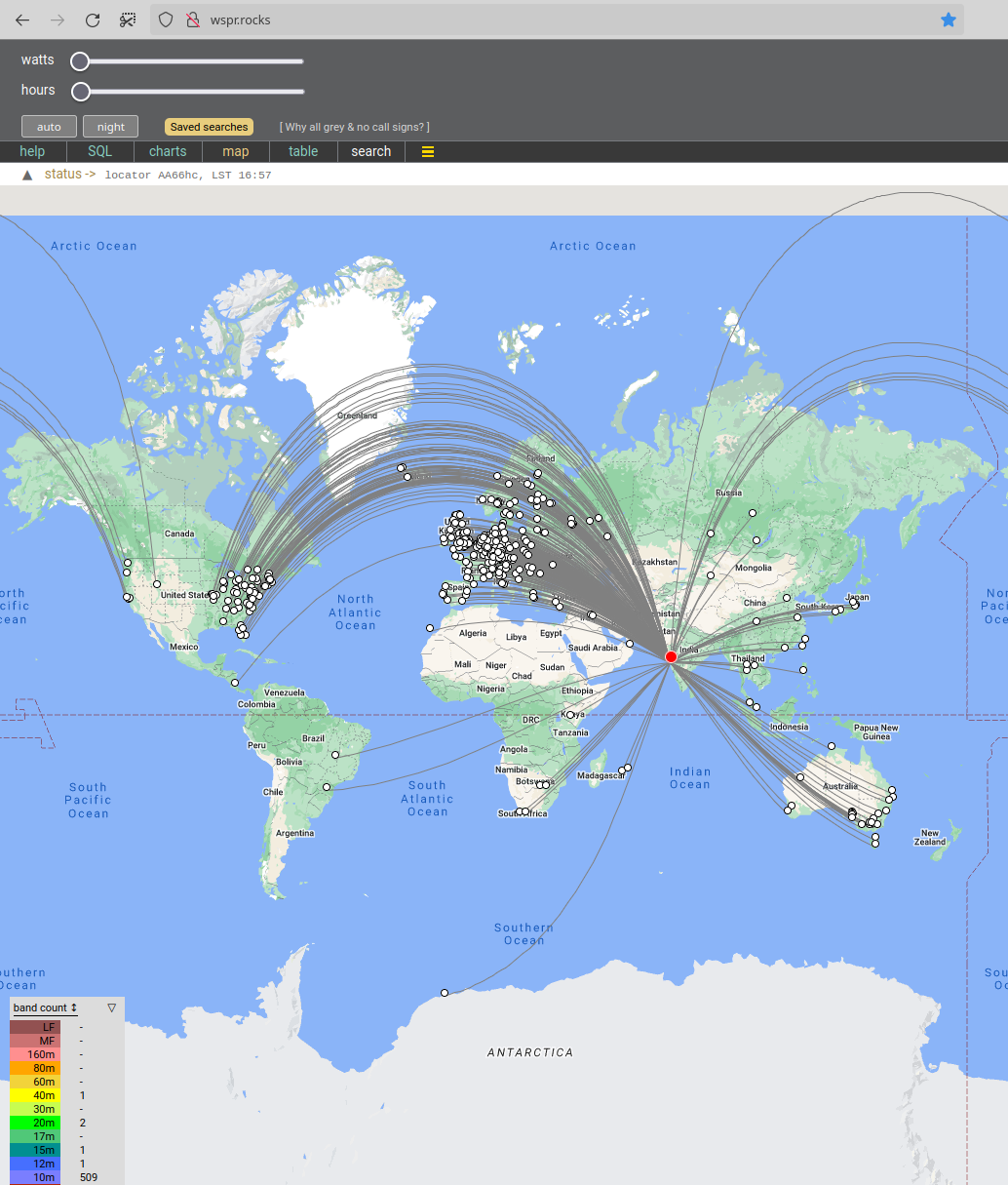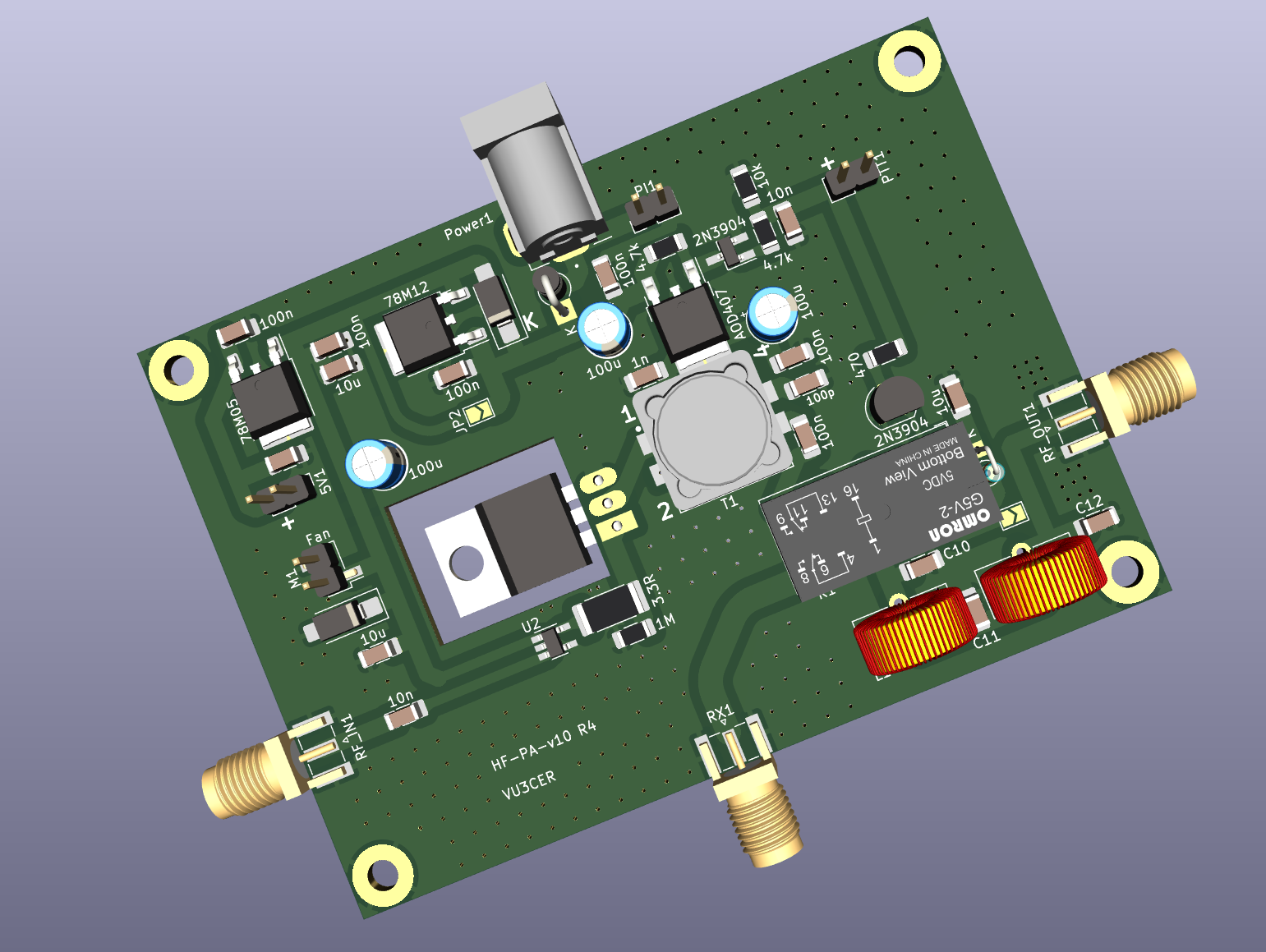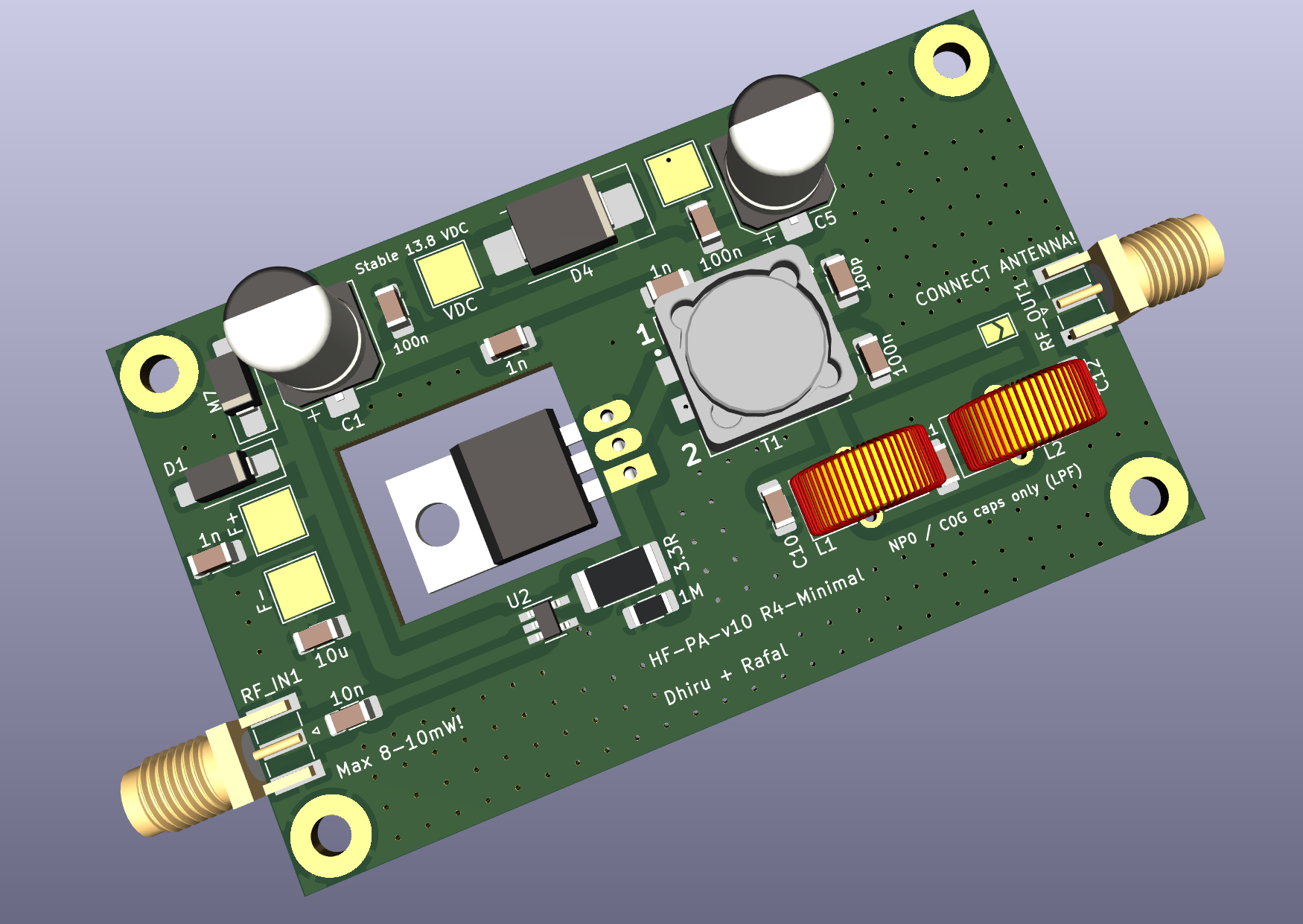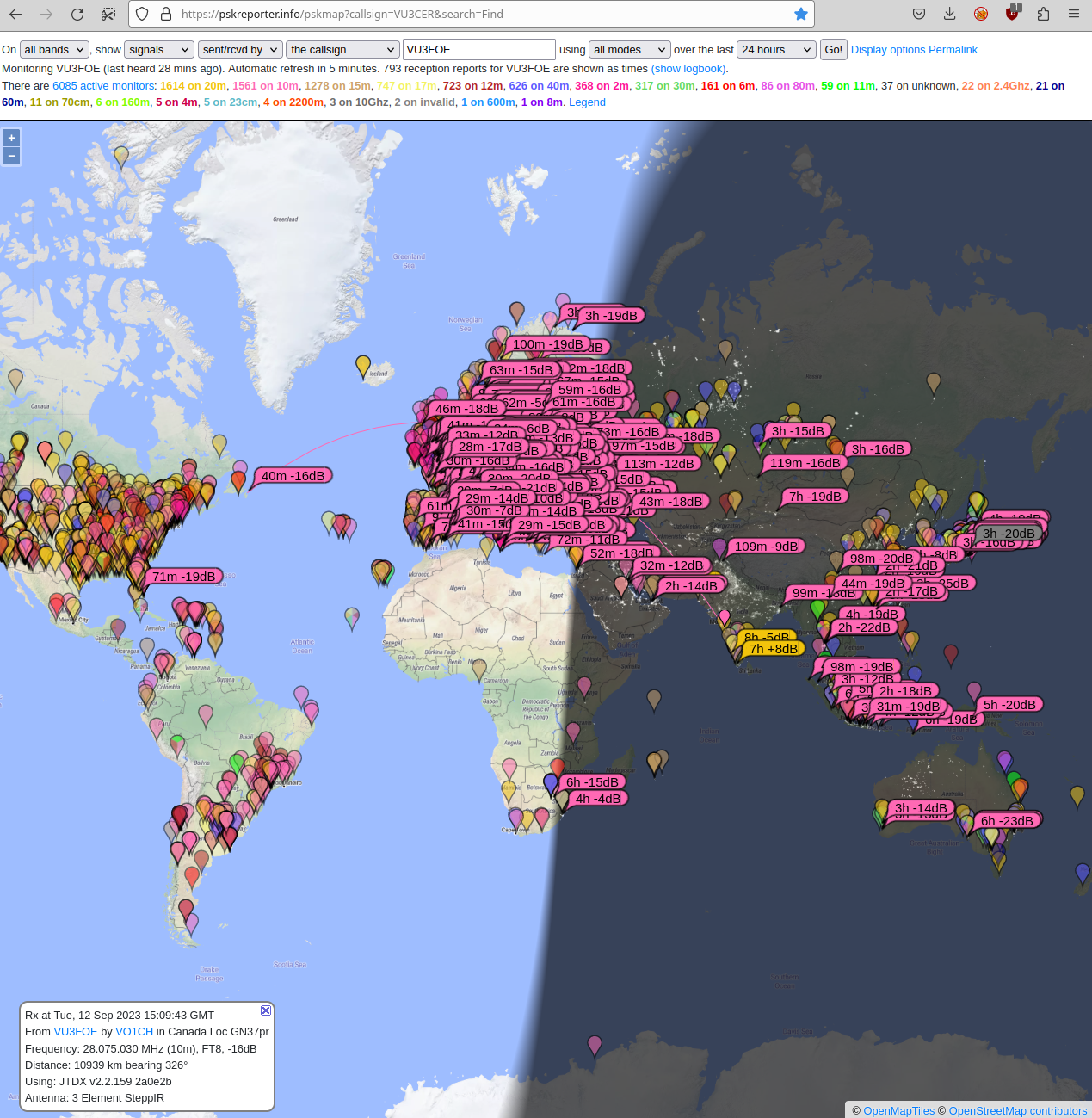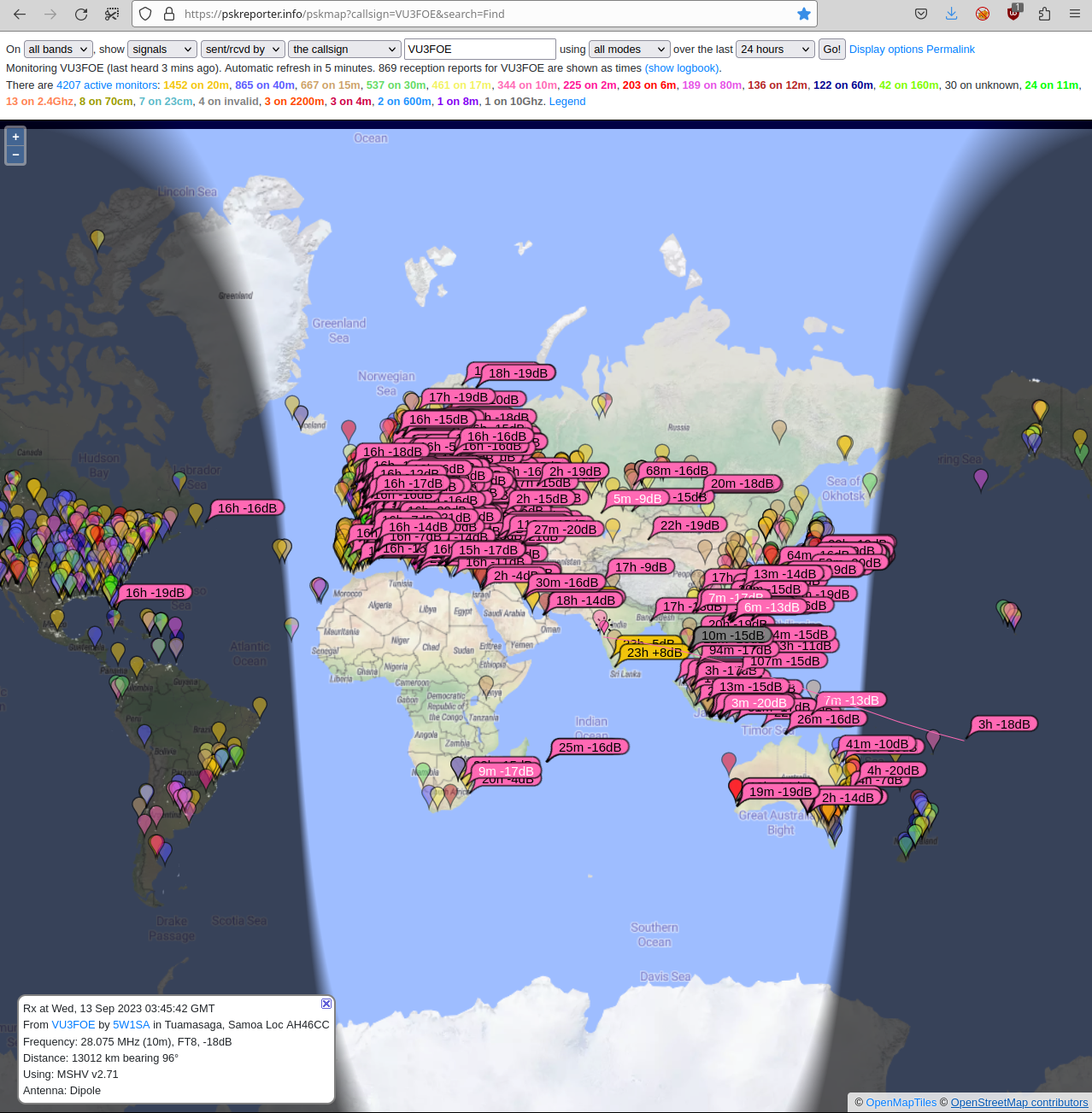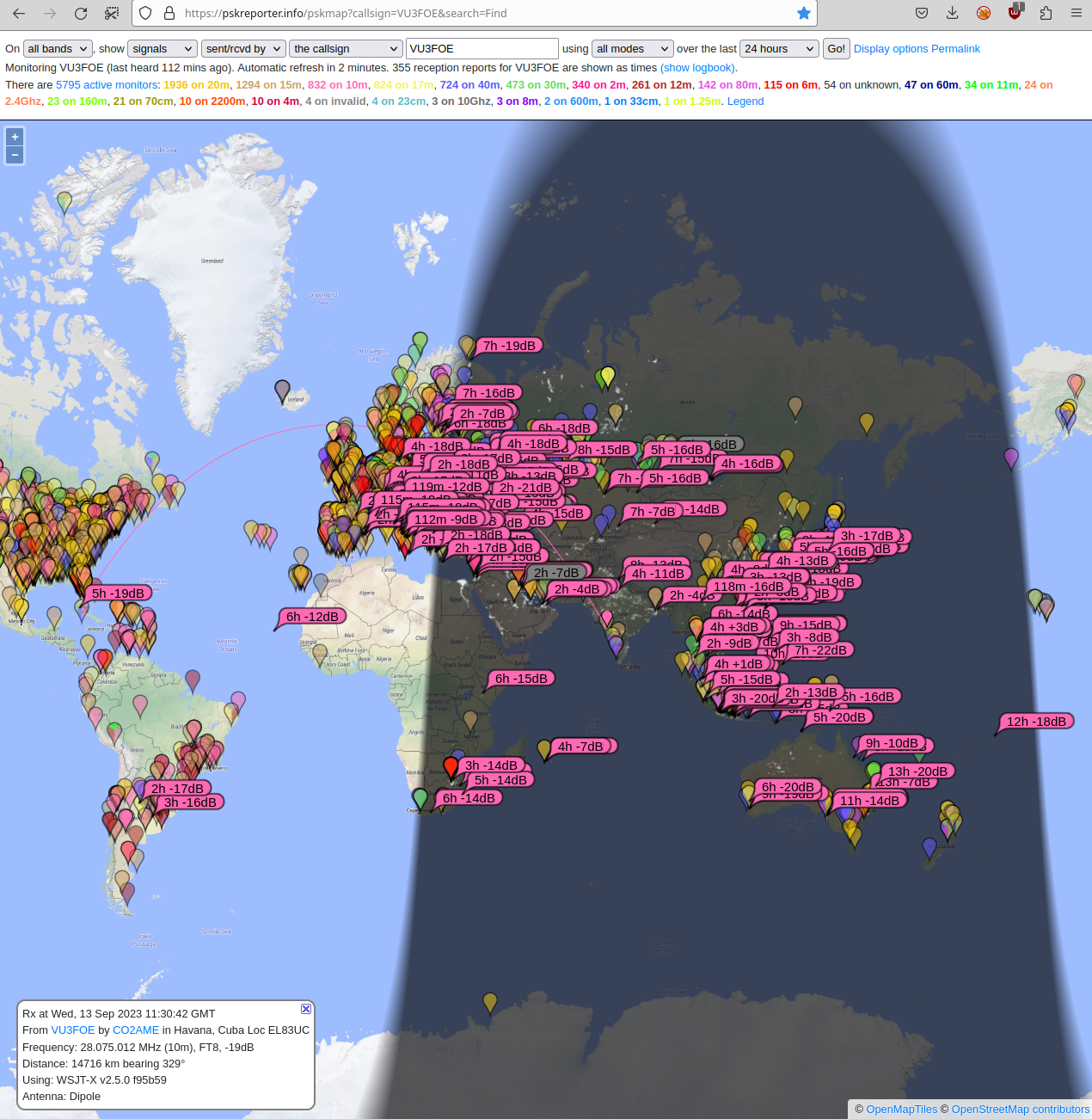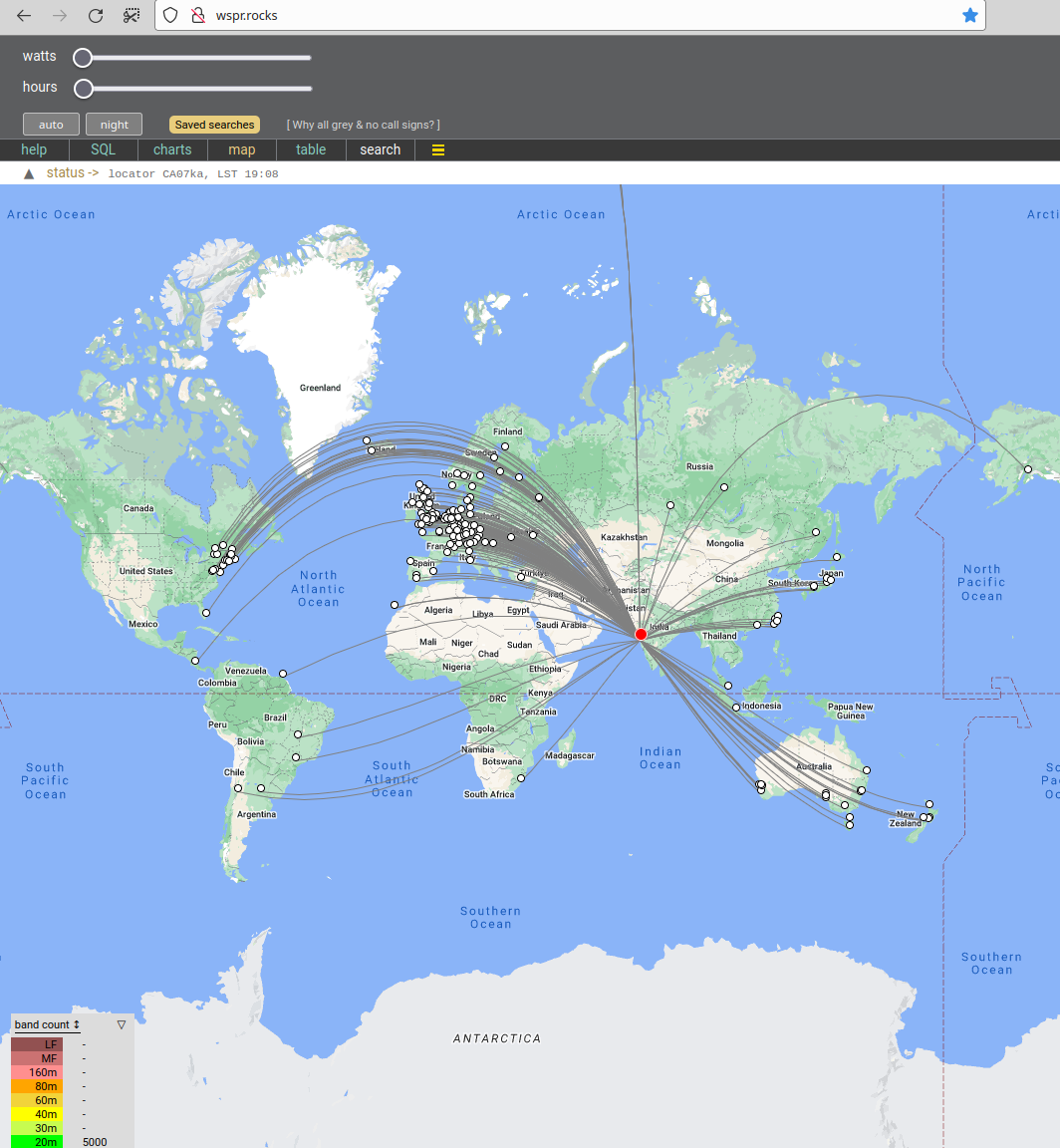Why?
We need a QRP PA which does NOT blow up (unlike those 3xBS170 and 4xBS170 designs). We believe that if the FETs blow up (despite best practices and intentions but under less-than-ideal external conditions), then the design has FAILED!
Important update (February-2024): LC match for IRF510 @ 28 MHz. 7 turns FT50-6 and 220pF capacitor. Corrected PAE figure is around 50%. 30v @ drain produces roughly 10W of clean'ish looking RF output. 24v @ drain produces 6W @ 28 MHz. 17v @ drain produces 3.7W.
March-2024 update: LC match for IRF510 @ 50 MHz. T50-6 4 turns and 180pF capacitor. 24v @ drain produces clean'ish 28.8 Vpp (~2W). PAE is around 25%. Such is life...
Update (29-September-2023): By removing the gate resistor, we firmly push the amplifier into more Class-D operation. The MOSFET now remains as cool as a cucumber!
Update (10-September-2023): The PCB was successfully validated!
Output is 7 to 8 W (before LPF) over a range of 160m to 10m as expected, with a 15V SMPS power supply. With a Pro-BPF attached, the power output is ~5W even at 28 MHz with IRF510! It even puts out 2W @ 50 MHz!
Amplifier characterization (@ 30.7 MHz for some reason, before LPF):
7 volts -> 2W
8 volts -> 3W
9 volts -> 3.5W
10 volts -> 4W
11 volts -> 5W
12 volts -> 6W
14 volts -> 8W
Efficiency is in the range of 45 to 50% which isn't bad ;)
Another result: 17 volts. 14 MHz. NKK LPF. 17.3W DC in. 57.6 clean Vpp on scope. 8.3W clean RF output @ 48% efficiency!
BOM cost (minimal version): < 450 INR only - beat this! ;)
Note: HF-PA-v10 is also known as CoolAMP (TM).
Build Notes:
-
Use a 15V / 16v power supply.
-
If you want to use a 13.8V power supply, then
-
Do NOT install the 78M12 regulator
-
Bridge the JP2 jumper
-
-
Use adequate heatsinking. I use a 100x100x200 aluminium block with a 12v fan for doing WSPR activities. The MOSFET temperature stays under 45 degrees this way.
-
PTT is active high - 3.3v is enough to trigger PTT.
-
To skip the PTT sub-circuit, bridge the AOD407 MOSFET's source to drain.
-
This amplifier can be directly driven by Si5351 (use 8mA drive setting)!
-
IMPORTANT: For safety and RF output control, use a
10A DC-DC Step-down Adjustable Constant Voltage Moduleor something similar.
Results:
Fun on WSPR:
Note: I am using a 5-meter long EFHW antenna tuned for the 10m band along with ~45 meters of HLF-240 coax. Your results should be better than mine ;)
Quick Hacks:
I am using one v10 board (on low power setting of ~1 to 2W) to drive the second v10 board.
The second v10 board has IRF530 on it. It uses a simple 3R3 SMD drain choke, 240nH inductor (8 turns on T50-6) + 470 pF LC match for the 20m band at the output side.
The power output is 20W+ with 30v at the IRF530 drain. While this is fine for FT8, we decrease the output power to 9 to 12W for WSPR mode (considering derating, heat dissipation, fear of "flash over")
December-2023 update: We can now use IRFP140N (with its massive TO-247 package) to generate around "20W" safely for WSPR. We drive the IRFP140N MOSFET directly with the UCC driver chip now.
Settings: UCC driver at roughly 12v. With LC match set for 20m band (NB!).
IRFP140N @ 28v drain @ 14 MHz -> 22W
IRFP140N @ 28v drain @ 3.5 MHz -> 20W (for Rafal)
IRFP140N @ 28v drain @ 7 MHz -> 20W
We believe we can push 25W easily by feeding 14v to 15v to the UCC driver chip.
The "final" IRFP140N MOSFET remains as cool as a cucumber, pretty boring - right? Where have the "exciting" days of the MOSFETs blowing up in your face gone? Just kidding!
NB: To overcome antenna losses (~2.0 SWR 20m dipole), lossy 50m meters of HLF-200 coax, we need to generate around 15W+ on the amplifier side.
In [1]: 15W * 0.88 (SWR losses) * 0.40 (coax losses)
Out[1]: 5.28
PA protection:
-
We plan to use INA219 to monitor current consumption, and to terminate TX if anomalies are detected.
-
Use
thermocoupleattached to the MOSFET's body using thermoglue to monitor the temperature, and to terminate TX if anomalies are detected.
New discoveries (via https://github.com/rafal-rozestwinski):
-
Power output is 1 to 1.5W on 50 MHz.
We can probably get 2 to 3W with some more work here (push the amp into more Class-D).
-
The PA survives open and short conditions but protections are recommended in any case.
-
INA219 based current monitoring
-
Thermocouple based temperature monitoring
-
-
We do NOT recommend the old-skool SWR monitoring approach due to its complexity (for end-users).
Learnings:
-
Keep the IRF510's gate voltage <=14 volts.
If the IRF510's gate voltage is too high (i.e. when IRF510 is over-driven), it results in super wide-band distorted noisy signal on the output - you don't want that ;)
If you want to feed high voltages to IRF's drain, then use a regulator (12v) for powering the UCC driver chip.
Joining In:
Are you interested in such projects, and spam-free technical discussions?
If yes, you might be interested in joining the 'HAMBREWERS' Telegram group.
